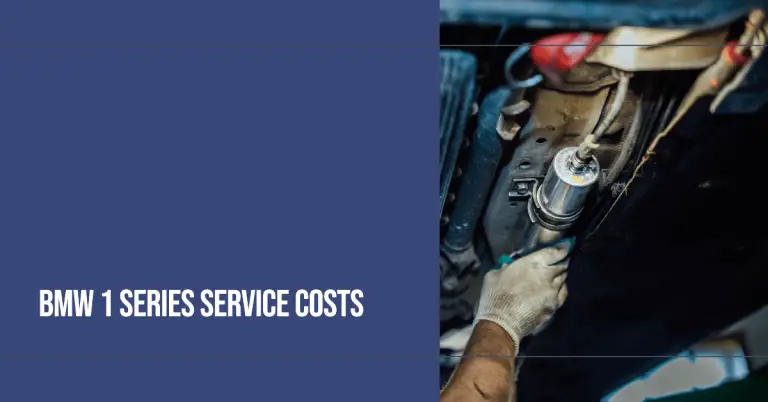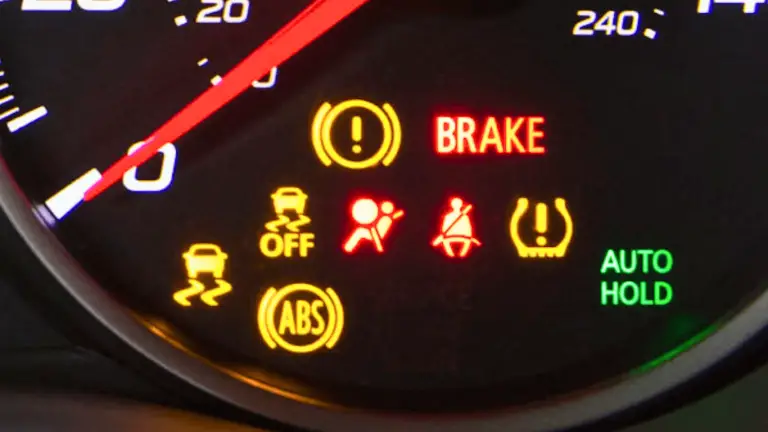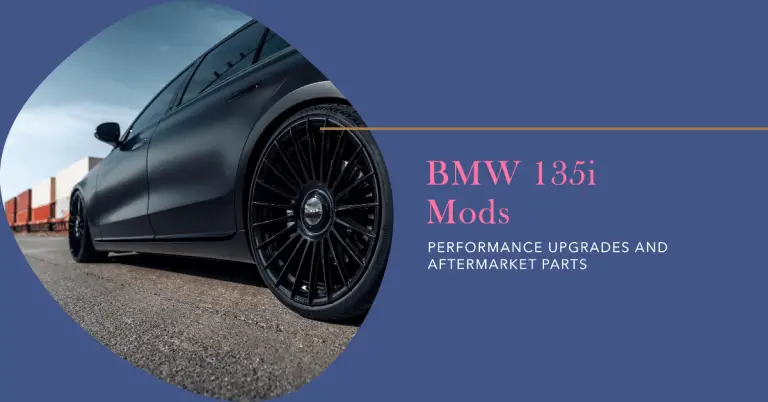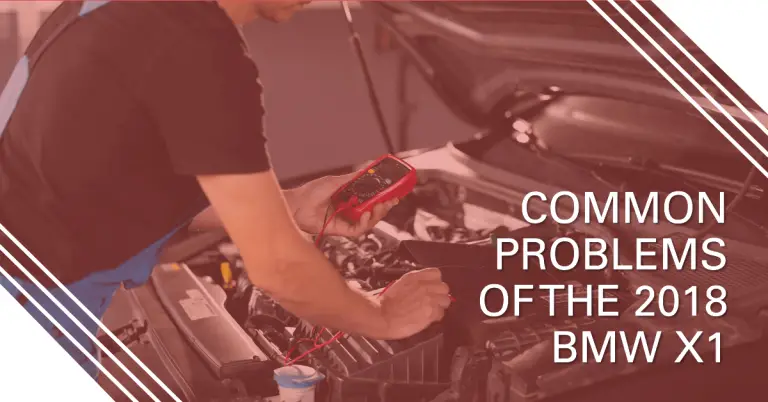Drivetrain BMW 1 Series: Understanding the Basics
Are you a new or prospective BMW 1 Series owner looking to better understand this high-performance luxury vehicle’s drivetrain? With rear-wheel drive, advanced transmission options, and powerful turbocharged engines, the BMW 1 Series drivetrain delivers an exhilarating driving experience. But how exactly does it work and what do you need to know about maintaining these complex systems?
In short, the BMW 1 Series drivetrain consists of the engine, transmission, driveshaft, differential, and axles that deliver power to the rear wheels. Manual and automatic transmissions, as well as rear-wheel and all-wheel drive options, provide different performance and handling. Turbocharged 4-cylinder and 6-cylinder engines deliver brisk acceleration. Like any performance drivetrain, preventative maintenance andprompt repair of any issues are key to longevity.
This in-depth beginner’s guide will provide an overview of the BMW 1 Series drivetrain. We’ll cover:
- The pros and cons of manual and automatic transmissions
- Key differences between rear-wheel drive and all-wheel drive systems
- Specs and performance of BMW 1 Series engine options
- Beginner-friendly BMW performance upgrades and tuning
- Best practices for maintaining these high-performance drivetrains
Whether you’re curious about squeezing more power from your engine or just want to learn more about how your 1 Series delivers its trademark driving experience, read on for a comprehensive look at the BMW 1 Series drivetrain.
Decoding Manual vs. Automatic Transmissions
The transmission is a core component of any vehicle’s drivetrain. It is placed between the engine and wheels to smoothly transfer rotational power. BMW 1 Series models offer both manual and automatic transmission options. Which is better depends on your priorities as a driver.
The Engaging Driving Experience of a Manual
Enthusiasts often prefer the hands-on experience of a manual transmission. With a manual, the driver operates a clutch pedal to manually shift between gears. Offered on most BMW 1 Series trim levels, a manual gives you more control over gear changes and a direct connection to the drivetrain.
Benefits of opting for the BMW 1 Series manual transmission include:
- Enhanced driver engagement – The act of manually working the clutch and shifter provides a rewarding, interactive driving experience that makes you feel one with the vehicle.
- Improved fuel efficiency – Manual transmissions have better fuel economy as they have fewer moving parts and don’t sap power through a hydraulic system like automatics. Expect 1-2 mpg better efficiency with the BMW 1 Series manual.
- Ability to select gears – You can pick the most optimal gear for conditions, staying in a lower gear for more power or a higher gear for quieter cruising.
- Fun factor – Quick shifting through the gears provides an adrenaline rush and allows you to push the engine to higher rpm.
The downsides of the manual are the steep learning curve for new drivers and the increased workload in stop-and-go traffic. But for driving enthusiasts seeking maximum control, the BMW 1 Series manual transmission delivers.
The Convenience of an Automatic Transmission
Drivers who want a more relaxed driving experience appreciate the ease of an automatic transmission. BMW automatic transmissions come with steering wheel-mounted paddle shifters that allow manual gear changes when desired. Key benefits of an automatic include:
- Simplicity – Two pedals and no manual shifting make driving easy, especially in heavy traffic.
- Better for commuting – Automatics shine when commuting in congested traffic with lots of stop-and-go.
- Paddle shifters provide control – When you want more engagement, the steering wheel paddles let you manually shift gears quickly.
- Improved performance – BMW’s automatic transmissions are very well-engineered and deliver lightning-fast shifts.
If you value convenience and a luxurious driving experience over maximum control, a BMW 1 Series automatic gets the job done. While not as hands-on as a manual, advanced automatics like BMW’s 8-speed Steptronic provide silky smooth shifts and sophisticated performance.
Dual Clutch Transmissions – Best of Both Worlds
A third transmission option offered by BMW is the dual clutch transmission, sometimes called a DCT. This advanced automatic transmission uses two separate clutches for even faster gear changes. DCTs operate like a manual with two clutches, but without a clutch pedal.
Benefits of dual clutch transmissions include:
- Lightning fast shifts – Dual clutch systems shift gears in mere milliseconds for max performance.
- Manual mode available – Like a traditional automatic, steering wheel paddles let you manually shift gears.
- Improved fuel efficiency – DCTs save gas compared to a normal automatic since gears pre-select.
- Sporty experience – DCTs shift aggressively and respond quickly like a manual for an engaging drive.
The complex engineering of dual clutch transmissions does come at a higher initial cost. But for drivers seeking the best of both worlds, DCTs merge convenience and enthusiast appeal.
Choosing Your Ideal Transmission
When selecting a BMW 1 Series model, deciding between manual, automatic, and dual clutch transmissions comes down to personal preference.
- Manual – For driving purists who crave control and engagement.
- Automatic – Provides effortless daily driving, especially for commutes.
- Dual Clutch – Blends convenience with sporty precision shifts.
Any of these advanced transmission options will provide an excellent driving experience. Test drive manuals and automatics to decide which best fits your needs behind the wheel.
Rear Wheel Drive vs. All Wheel Drive
In addition to transmission choice, BMW 1 Series buyers must pick between standard rear-wheel drive or available all-wheel drive. The xDrive AWD system improves traction and control in wintry conditions. But traditional RWD has handling advantages during spirited driving.
Rear Wheel Drive Dynamics
Known for agile handling and balanced performance, most BMW 1 Series variants send all engine power to just the rear wheels. With appropriate tires, RWD allows:
- Precise steering feel – Only having drive wheels in the rear prevents torque steer for sharp turn-in.
- Ideal front/rear weight balance – Keeping components like the transmission up front improves balance for RWD.
- Fun factor while accelerating – Power going to rear wheels allows controlled oversteer when pushing the limits.
Rear-wheel drive does come with trade-offs:
- Oversteer in inclement weather – RWD BMWs require caution in rain or snow to avoid spinning out.
- Not ideal for towing – Front wheels are unpowered so traction suffers when towing up hills.
While requiring more driver skill in low-grip conditions, few configurations can match rear-wheel drive for agile handling and performance when pushing a BMW 1 Series through corners.
All Wheel Drive Traction and Control
For 1 Series owners who face substantial snow or drive mostly in cold climates, BMW’s advanced xDrive AWD system adds traction and stability:
- Traction in poor weather – Power goes to all four wheels for confidence on slippery roads.
- Prevents wheel spin – BMW xDrive responds in milliseconds to distribute torque and limit spin.
- Better handling on bumpy roads – With four powered wheels, the 1 Series remains composed over uneven surfaces.
There are a few limitations to weigh with xDrive AWD:
- Slightly less playful handling – Power going to all 4 wheels reduces tail-happy oversteer when accelerating.
- More maintenance – Additional differential and driveshaft joints require servicing.
- Reduced fuel economy – Extra AWD components add weight and parasitic drivetrain losses.
While giving up some rear-drive dynamics, the superb xDrive system offers more traction and control when driving conditions are not ideal or high performance is not the priority. This makes it a smart choice for 1 Series owners in cold climates.
Finding the Right Balance
When configuring your new or used 1 Series, deciding between standard RWD and available AWD depends on climate and driving priorities:
- Rear-wheel drive is best for dry environments and enthusiasts who relish agile handling.
- All-wheel drive adds traction for wet driving and cold, snowy weather at the expense of some handling sharpness.
Test drive each setup on varying road surfaces when possible. While AWD provides added confidence in the snow, don’t underestimate a proper set of winter tires paired with RWD. Ultimately, pick the drivetrain that best aligns with your climate and driving enjoyment.
BMW 1 Series Engine Options: Power and Efficiency
No matter which drivetrain layout you select, a BMW 1 Series delivers brisk performance thanks to advanced turbocharged engines. Four-cylinder and six-cylinder options range from efficient to high-performance.
Four-Cylinder Power
Most BMW 1 Series variants utilize turbocharged 4-cylinder engines. With just 2.0 liters of displacement, BMW coaxes strong power output through precise turbocharging and direct fuel injection technology.
BMW 1 Series 4-cylinder engine highlights:
- 2.0-liter twin-turbo 4-cylinder engines make between 170-306 horsepower
- Turbo lag is minimal for great throttle response
- Excellent gas mileage – up to 32 mpg highway when equipped with auto stop-start
- Optional all-wheel drive is offered with 4-cylinder models
- Provides brisk acceleration and passing power for day to day-driving
Four-cylinder 1 Series models strike an appealing balance between efficiency and peppy performance. Even the base 180 horsepower 4-cylinder moves the compact 1 Series from 0 to 60 mph in just 6.3 seconds – quick for an entry-level luxury car. Eco-conscious buyers can opt for the 228i xDrive that still provides AWD traction while achieving up to 32 mpg on the highway.
Added Power with Six-Cylinders
Driving enthusiasts desiring the ultimate in BMW 1 Series performance can upgrade to a six-cylinder model. Displacing 3.0 liters and utilizing a twin-scroll single turbocharger, these motors generate exceptional thrust:
- BMW M135i: 306 horsepower and 332 lb-ft of torque
- 0 to 60 mph in 4.8 seconds with launch control
- Top speed electronically limited to 155 mph
- Engineered by BMW M performance division
- Rear-wheel drive only
- Available with manual or automatic transmissions
The inline six-cylinder transforms the compact 1 Series into a sports sedan with acceleration to rival much larger vehicles. While six-cylinder variants sacrifice some fuel efficiency with EPA ratings of just 20 mpg city, their immense power satisfies drivers craving BMW performance. The M135i model seen as a successor to the much-loved original 1 Series M Coupe provides ample muscle for aggressive track day driving.
Compare Engines to Choose Your Power Level
Prospective 1 Series owners should test drive different engine offerings. While four-cylinders satisfy most needs, the turbo six-cylinder is hard to resist for driving enthusiasts seeking to maximize ferocious acceleration and handling.
Beginner BMW Performance Mods and Tuning
Once you have put some miles on your new BMW 1 Series, you may be eager to unleash more power and enhance performance capabilities. A few beginner-friendly upgrades make it easy to add horsepower and improve handling.
Stock-Friendly Power Adders
These easy-to-install mods slightly improve throttle response and acceleration without impacting reliability:
- Cold air intake – Aftermarket air filters and intake tubes optimize airflow to the turbo for more boost.
- Cat-back exhaust – Less restrictive exhaust systems enhance turbo spool, flow, and sound.
- ECU tune – Reprograms engine computers for more boost, sharper throttle, and improved shifting.
With just these mods, expect seat-of-the-pants gains of 15-30 horsepower – excellent for enhanced acceleration. Best of all, they don’t alter emissions systems or add stress to the stock engine.
Handling and Chassis Upgrades
Beyond raw power, handling transformations are easily achieved:
- Lowering springs – Lower ride height for a planted, sports car-like feel when cornering.
- Upgraded sway bars – Reduce body roll for flatter cornering without sacrificing ride quality.
- Performance brake pads – Added bite and reduced brake fade when slowing down from high speeds.
As you gain experience modifying your 1 Series, consider upgrading the suspension dampers and installing a limited-slip differential for maximum cornering grip and acceleration performance.
Buying BMW Aftermarket Parts
Leading online retailers offer all of these beginner-friendly upgrades:
- ECS Tuning – Extensive BMW parts selection with brands like Bilstein and H&R.
- Turner Motorsport – Top source for BMW performance parts and tuning since 1993.
- Mod Bargains – Helpful 1 Series mod guides. Large in-stock inventory with quick shipping.
By sticking with reputable brands and dealers, you can install entry-level mods without compromising BMW’s engineering integrity – just significantly enhancing it.
Maintaining Your High-Performance Drivetrain
To keep your highly tuned BMW 1 Series engine and drivetrain running smoothly for years to come, following basic maintenance best practices is essential.
Fluid Changes
Frequently replacing fluids prevents wear and ensures optimal performance:
- Engine oil – Every 5,000-7,500 miles or 6-12 months. Use specified weight and quality oils.
- Transmission fluid – Every 50,000-75,000 miles keeps shifts smooth.
- Coolant – Flush and refill every 2-3 years as it degrades over time. Use BMW-approved coolant.
- Brake fluid – Flush every 2 years as it absorbs water over time leading to vaporization and degraded braking.
Sticking diligently to BMW’s maintenance schedule for fluid changes prevents undue wear and mechanical issues down the road.
Inspect Key Components
On each oil change, inspect the:
- Driveshaft boots – Tears allow contaminants to enter and damage CV joints.
- Axle shaft boots – Damaged rubber boots lead to torn CV joints and need replacement.
- Engine and transmission – Look under the car for any oil leaks.
Monitoring for leaks and damaged boots identifies issues before catastrophic drivetrain failure occurs. Address any problems promptly to maximize longevity.
Preventative Maintenance
Going above minimum maintenance requirements really preserves your investment:
- Change engine air filter – A clean filter allows proper airflow to the turbocharger.
- Use high quality fuel – Top tier gasoline keeps fuel systems clean.
- Detail the car twice yearly – Waxing paint and cleaning the engine bay prevents rust and corrosion.
- Replace tires proactively – Improper tread leads to reduced traction and impaired handling.
While adding performance upgrades is exciting, never neglect mundane maintenance tasks. With proactive care, your cherished BMW 1 Series will provide exhilarating, trouble-free miles for years to come.
Conclusion
The BMW 1 Series drivetrain offers superb performance and driving dynamics in a compact, accessible package. Between transmission choices, RWD vs AWD, potent turbo engines, and BMW’s renowned engineering, the 1 Series provides an unforgettable driving experience with refinement and quality construction. For those seeking practical luxury coupled with eager acceleration and sharp handling, it’s hard to top BMW’s entry-level rear-wheel drive sports sedan.
With this overview, you now have the essential knowledge to get the most from your new or used 1 Series drivetrain through proper maintenance and tasteful modifications. The BMW 1 Series remains the benchmark for affordable driving enjoyment.





